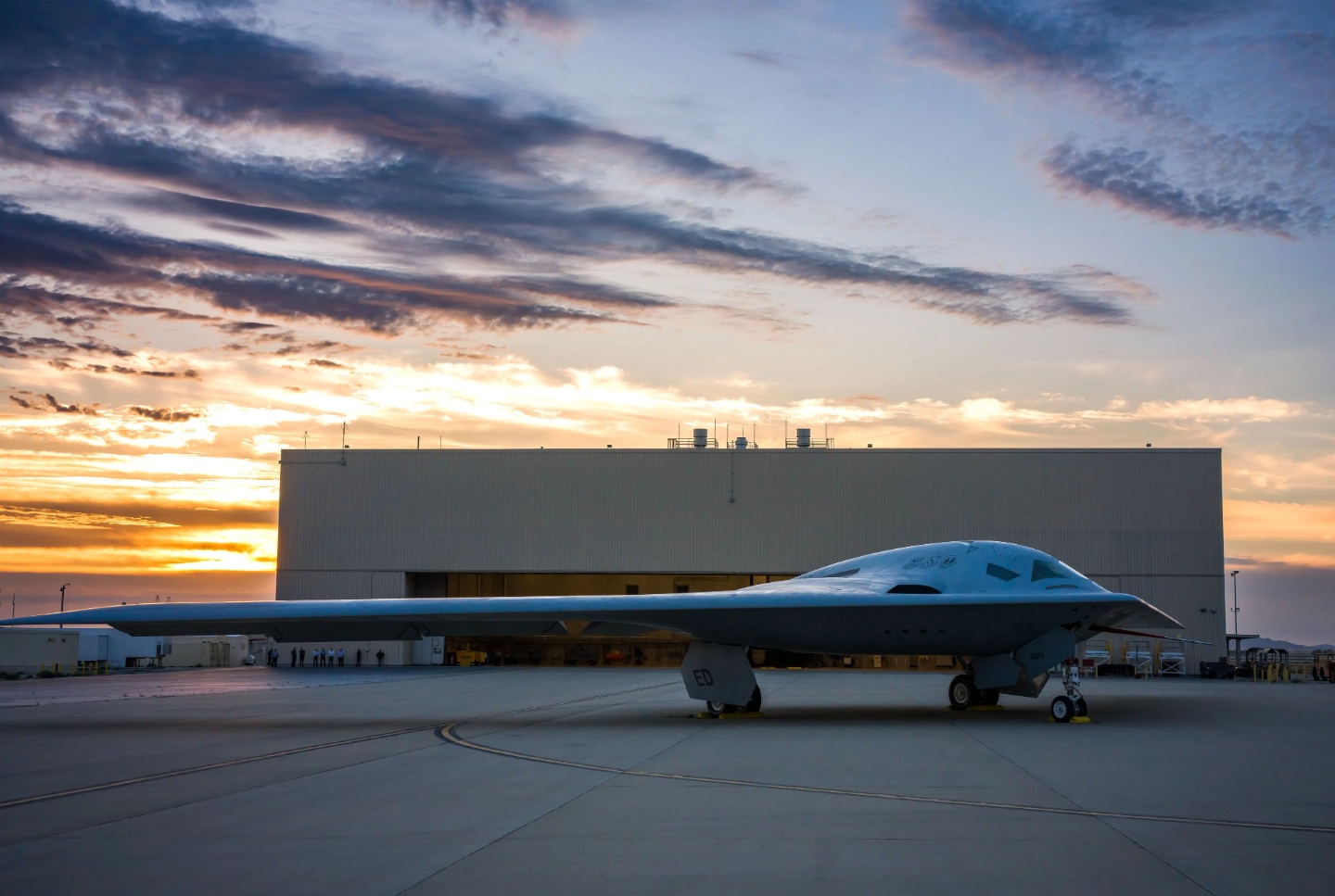New images of the under-development B-21 Raider Stealth Bomber have surfaced on social media, revealing awe-inspiring additional details about the aircraft.
The images were also a part of a presentation by US Air Force Chief General Charles CQ Brown Jr. – on his way to becoming the new Chairman of Joint Chief of Staff (CJCS) – during the Air and Space Forces Association conference in Washington DC earlier this week.
The images that show new systems on the aircraft’s body than the ones from December 2022, when it was officially unveiled, show consistent progress in its development and testing.
It also comes after a July 27 report in Air and Space Forces that quoted Northrop Grumman and US Air Force (USAF) officials announcing the jet accomplishing the first “power on” test.
They also gave careful and conservative estimates of the project’s development timeline, the scheduled roadmap, and the defense major’s financial health. This involved profit margins, development funding by the USAF, and inflation-adjusted expenditure. It was first unveiled on December 3, 2022, in a large ceremony at Northrop’s facility in Palmdale, California.
Spear Head Against Russian & Chinese Air Defenses
Considered a vital weapon envisaged to breakthrough enemy radars and air defenses through a combination of its stealth and electronic jamming, ensuring the program doesn’t follow the same fate of other high-ticket projects like the F-35 in terms of cost overruns, and delays have been a significant priority. The urgency of the weapon is high as assessments of a possible military clash with China or Russia have been consistently higher.
Careful scheduling, costing, and new production and engineering processes, like creating a digital clone to simplify technical modifications, have been introduced to keep the project on track.
Reports show defense executives and USAF officials have refrained from giving ambitious timelines on the bomber’s flight testing, production, and operationalization deadlines.

Sensor Spaceship Like The F-35
Interestingly, the latest images were taken just days after Northrop officials announced the pre-production power-on and began dropping on social media only on September 13. The high-resolution pictures show several critical features on the aircraft body that hint at the type of capabilities and technologies it possesses besides its development stage.
To begin with, an air data probe has been installed on the front left-hand side of the aircraft under the nose. This measures airflow and other aerodynamic information that goes into the prototype’s further development and final technical configuration for series production.
After initial flight tests where the plane’s kinematic performance has been found satisfactory based on the data gathered by the probe, this section is likely to be fitted with a radar array.
Secondly, other small square and trapezoidal-shaped sensors can be seen over and above the nose in the front section. There are four under each side of the wing on the bulging under-fuselage, four right under the duckbill-shaped nose, and two large square-shaped ones on either side of the front landing gear.
Like the F-35, these could be a part of the B-21’s own Distributed Aperture System (DAS) that consists of electro-optical infrared sensors or sensors that detect radar and emissions that form a portion of its Electronic Intelligence (ELINT) array.
Lastly, we also get a better view of the nacelles and engine intakes that are unusually deeply buried over the wing and do not protrude as prominently as with the B-2 Spirit stealth bomber.
The configuration raises the question of how such a small, thin intake can suffice for a large, powerful engine that powers a strategic bomber. It leads to wonder whether the designers have introduced a slightly upward-facing intake for the air-breathing engine, but these can be speculations at best.

Concealing the inlets can, however, be said to be an effort toward lending it more stealth and radar-beating characteristics, significantly enhancing its front aspect stealth – or radars that would be scanning the aircraft from the front.
If work moves per the scheduling and timeline drawn up by the USAF and Northrop Grumman, a first flight can be expected between late this year and early 2024, or, at the latest, by mid-that year, itself preceded by taxi trials. Hopefully, more images from various angles will be released on social media for a more informed analysis.
- The author can be reached at satamp@gmail.com
- Follow EurAsian Times on Google News




